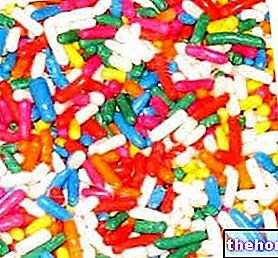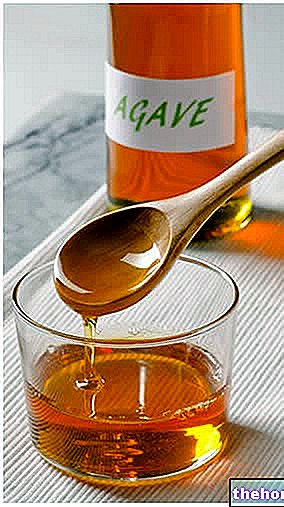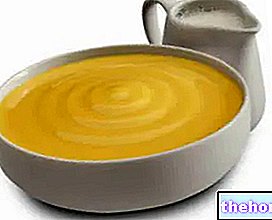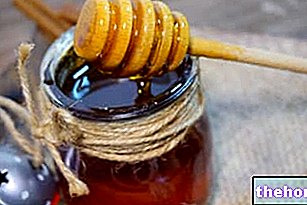Similar to artisanal ice cream, homemade ice cream requires a basic study of the mixture. A good ice cream, in fact, cannot and must not be considered a casual mixture of frozen raw materials.

How to proceed?
We now report the example of a very simple fiordilatte ice cream, prepared with:
- 500 ml of milk
- 50 g of cooking cream
- 130 g of sugar
- 25 g of dextrose
- 4 g of stabilizer (carob seed flour)
- 14 g of inulin
By analyzing the nutrients present in each ingredient, we find out if this formula is balanced or if you need to make some changes.
Let's proceed step by step:
- Divide each raw material into the group it belongs to (sugars, fats, S.L.N.G., other solids). In our case we have:
- Sugars: sucrose and dextrose
- Fats: milk and cooking cream
- S.L.N.G .: proteins and lactose of milk and cream
- Other solids: inulin, stabilizer
- Calculate the amount of total sugars (sugar limits in the mixes for cream ice cream: 16-22%)
Sucrose provides 100% sugars (130 g) and dextrose 80% sugars (80% of 25g is 20g). The total sugar is 130 + 20 = 150 g.
Calculating that the weight of the mixture is 723 g (500 + 50 + 130 + 25 + 4 + 14), the percentage of sugars (x) is calculated by applying a simple proportion, putting the unknown x as the percentage of sugars to be calculated:
150: 723 = x: 100
x (% sugars) = 20.7% sugars
The sugars are perfectly balanced.
- Calculate the amount of total fat (fat limits in cream ice cream mixes: 6-10%)
Whole milk provides 3g of fat per 100g of milk. We have 500ml of milk, so the total fat will be 15g. The cooking cream provides 20 g of fat per 100 g of product. In this case we have 50 g of cream, or 10 g of fat. Total fats are 25 g (15 + 10).
As for sugars, also for fats we will have to obtain the percentage quantity starting from the calculated grams, through the following proportion:
150: 723 = x: 10025: 723 = x: 100
x (%) = 3.5% fat Fats are unbalanced because the minimum recommended limit is 6%. - In this second case, the amount of total sugars will also have to be recalculated / corrected because an increase in cream (specifically) also leads to an increase in the total weight of the mixture. The balance of each individual ingredient must be reviewed and possibly corrected when the quantity of another component in the mixture is changed.
Please note
In this formulation we have added inulin which, as we know, acts as a substitute for fats, that is, it gives the ice cream body and structure: inulin therefore compensates for the lack of fats in the mixture.
In other words, if we did not add inulin to the mixture, we would have to increase the amount of cream because the fats are lower than the minimum recommended limit. In this case, however, we have added inulin which allows us to keep the levels of fats contained in the mixture low.
In any case, we also report below the ideal percentage of fats for an ice cream so formulated, regardless of the amount of inulin present in the mixture.
Considering that the minimum amount of fat recommended in a cream ice cream is 6%, we should increase the amount of cream, bringing it for example to 150g.
In the latter case, the total grams of fat will be 15 (of milk) + 30 (of cream) = 45g, which correspond to 6.2% of fat (obtained from the proportion 45: 723 = x: 100).
- Calculate the amount of S.L.N.G. (limits of S.L.N.G in a mix for ice cream: 9-12%)
To calculate the quantity of Non-Fat Milk Solids, the following general formula must be applied:
[100- (Sugars% + Fats% + Other Solids%)] x 0.15
We have found that sugars are present in a percentage equal to 20.7% and balanced fats represent 6.2% of the mixture: now we have to calculate the percentage of other solids (dry residue) starting from the amount of inulin and stabilizer. In this mixture we find 14 g of inulin + 4 g of stabilizer (total solids = 18 g). We now transform grams into percentages, applying the proportion 18: 743 = x: 100
We find that the unknown x is equal to 2.4% (percentage corresponding to the dry residue present in the mixture).
So now we can find out if the S.L.N.G. are balanced by applying the general formula:
[100- (20.7 + 6.2 + 2.4)] * 0.15 = 10.6% S.L.N.G - 500 ml of milk
- 150 g of cooking cream (no more 50g, as we had previously established)
- 130 g of sugar
- 25 g of dextrose
- 4 g of stabilizer
- 14 g of inulin
- Now that the mixture is balanced, we can proceed with the MIXING of the ingredients.
In a saucepan, pour the milk, cream and sugars.
Carob flour can also be added at this stage: however, remember that the action of this stabilizer begins when 80 ° C is reached.
The mixture must therefore be emulsified with a manual whisk or, better still, with an immersion mixer.
Subsequently, the mixture must be heated until it reaches 45 ° C. At this point, we can add the inulin. - Then proceed with the PASTEURIZATION of the compound: to speed up the process, it is preferable to choose the high pasteurization, which is carried out by bringing the mixture to 80 ° C and maintaining the temperature for 2 minutes.
- The pasteurized mixture is then cooled as quickly as possible, by immersing the saucepan in a basin with water and ice. Everything is then left to rest (MATURATION OF THE MIX) in the fridge for 6-12 hours. The rest of the mixture serves to favor the hydration of the solid substances and to reduce the formation of coarse ice crystals during the subsequent freezing phase.
- At this point, the mixture can be poured into the home ice cream maker (GELATURA OR BATCHING) and left to stir for 10-20 minutes, until the desired consistency is reached.
For a further consolidation of the mass, the ice cream can be placed in a tray in the freezer for a couple of hours.
Even the S.L.N.G. they are balanced.
The balanced blend is therefore formulated as follows:
Stracciatella ice cream
Problems with playing the video? Reload the video from youtube.
- Go to the Video Page
- Go to the Video Recipes Section
- Watch the video on youtube
Those who do not have an ice cream maker can still delight in the preparation of ice cream by respecting all the steps described up to the maturation of the mixture.
At this point, the balanced mixture of ingredients is poured into a large tray with low edges, then left to rest in the freezer. After 15-20 minutes, the tray is removed from the freezer and the mixture properly mixed, first with a whisk. , then with a stiff paddle. The operation must be repeated every 15-20 minutes, for about 2 hours or until the ice cream is solidified. It is important to stir the mixture often to facilitate the incorporation of the air in the ice cream, to avoid the crystallization of the water and to obtain an ice cream with an optimal consistency.
A practical example of ice cream made without an ice cream maker is available in the video recipe for athletes "protein ice cream with hazelnuts".
Other articles on "Making homemade ice cream"
- Preparation of Ice Cream - Pasteurization, Maturation, Creaming
- Ice-cream
- Sugar in Ice Cream
- Fats in Ice Cream
- Artisan Ice Cream - Non-Fat Solids and Dry Residue
- Types of Ice Cream
- Preparation of the Gelato - Balancing the mixture
- Calories of ice cream




























